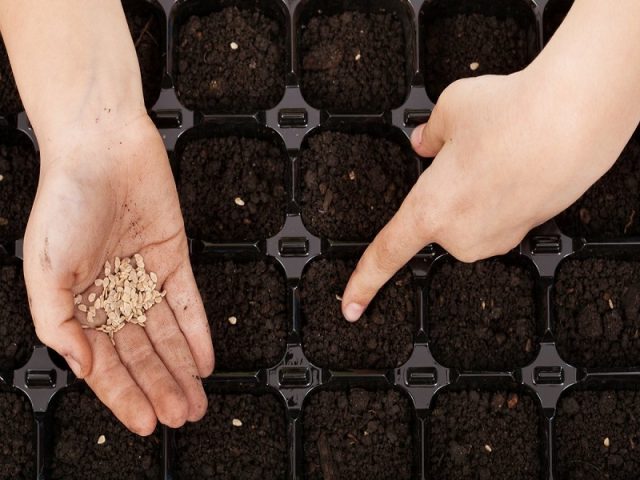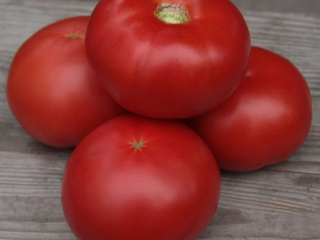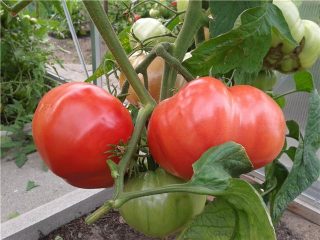Content
Experienced gardeners prefer to grow tomatoes with different ripening periods. This allows you to provide your family with delicious fresh vegetables for several months. Among the wide variety of early ripening varieties, the Early 83 tomato, bred in the last century at the Moldavian Research Institute, is popular. Although the tomato has been grown for a long time, it still reliably produces high yields.
Detailed description of the variety
Tomato Early 83 is a low-growing variety intended for growing in greenhouses and open ground. It has a strong root system that develops quickly and is branched. The tap-type root goes to a great depth and spreads widely in diameter from the stem.
The plant has a short, thick, erect, branching stem about 60 cm high. Requires a garter when growing.
The leaves are dissected, odd-pinnate, slightly pubescent. Color – dark green.
The tomato has light yellow, inconspicuous-looking flowers, small, collected in a brush. 5 - 7 tomatoes ripen in it, the weight of each of which is about 100 g. The ripening period of the fruit is 95 - 100 days.
Early 83 is a determinate variety, that is, it has growth restrictions. Growth ends with a brush.Further, the ovaries form on stepsons growing from the axils.
Description and taste of fruits
Early 83 tomato fruits are round-flat in shape, smooth, and have mild ribbing. At full maturity they are bright red. Tomatoes have dense pulp, several chambers with a small number of seeds. The fruit has an excellent aroma and sweet and sour taste. Over the entire growing season, 4–5 clusters ripen, in which up to 8 fruits are set. They are stored for a long time and can easily withstand long-term transportation. Tomatoes of the Early 83 variety are well suited for canning, preparing salads, purees, juices, and marinades.
Tomato has high taste and dietary qualities. The calorie content of 100 g of product is only 19 kcal. Nutrients: 3.5 g carbohydrates, 0.1 g fat, 1.1 g protein, 1.3 g dietary fiber.
Thanks to its chemical composition, eating tomato helps lower cholesterol, increase immunity, and form hemoglobin. These properties are manifested due to the presence of glucose, fructose, pectins, acids, vitamins and microelements in the composition.
Characteristics of tomato Early 83
The variety was bred in Soviet times as a result of selection carried out on the basis of the Research Institute of Irrigated Agriculture in Moldova. Recommended for cultivation in open ground in the southern regions of Russia with a warm climate (Crimea, Krasnodar Territory, Caucasus). Under these conditions, a tomato yields up to 8 kg per square meter. In the middle zone, the Urals and other areas with a moderately warm climate, Early 83 is recommended for cultivation in greenhouses, since the variety is not cold-resistant. Its yield in closed ground conditions is high - 8 kg or more fruits per square meter.
The height of a plant cultivated in open ground is less than in a greenhouse - about 35 cm. But this does not affect the yield of the tomato. In the middle zone, the variety can be grown in open ground, provided that the plants are covered in cold weather. Tomato Early 83 is highly resistant to common diseases: tobacco mosaic, rotting, Phoma.
Pros and cons of the variety
Among the advantages of the Early 83 tomato:
- early amicable maturation of the hands;
- high yield when grown in open and closed ground;
- excellent taste;
- beautiful presentation of the fruit;
- no tendency to crack;
- unpretentiousness of care;
- good keeping quality of tomatoes;
- possibility of long-term transportation;
- high resistance to diseases and pests.
According to reviews, the Early 83 variety has no disadvantages. But they can appear when agricultural cultivation practices are violated or extreme weather conditions occur.
Rules for planting and care
Caring for tomatoes is not difficult, but for a large harvest you need to make an effort. Early 83 may well grow and produce a harvest with periodic watering, protection from pests and weed. For maximum yield, an integrated approach and knowledge of agricultural technology are required. The tomato does not like excessive moisture, does not tolerate drought, and should not be overfed with fertilizers, especially nitrogen ones. Caring for the Early 83 variety includes a number of activities:
- timely watering;
- periodic feeding;
- loosening the soil;
- hilling the plant;
- tying to a support;
- weeding;
- treatment against pests and diseases.
Sowing seeds for seedlings
To calculate the timing of sowing tomato seeds Early 83 for seedlings, you should follow the rule: sow in boxes or pots 50 days before the intended planting in the ground.To guarantee the purity of the variety, it is better to grow the seedlings yourself. The first step will be preparing the soil. Store-bought is ready for use, it contains all the necessary substances for the growth and development of a tomato.
Independent soil preparation must be done in the fall. Rotted leaf litter is best suited for growing seedlings. Before use, disinfection must be carried out by calcination, freezing, treatment with boiling water or a solution of potassium permanganate.
The containers for sowing tomatoes Early 83 can be boxes, peat pots, tablets and any containers. The pots are treated with hot water. The tablets are ready for sowing and do not require disinfection.
Before sowing, seeds must be prepared:
- sort by soaking in a weak saline solution;
- disinfect in potassium permanganate;
- soak in a growth stimulator;
- carry out hardening;
- subject to bubbling - enrichment with oxygen.
The prepared seeds are placed on ready-made, moistened, slightly compacted soil using tweezers in rows according to a 2x3 pattern. Next, they are slightly pressed into the ground and sprinkled with soil (no more than 1 cm). Place containers with future tomatoes in a warm (24⁰C) place without drafts.
The soil must be periodically watered by spraying. After the seedlings reach a height of 5 - 7 cm and the first “real” leaf appears, the Early 83 tomato seedlings should be pruned:
- remove weak shoots;
- discard diseased plants;
- Plant the best seedlings one at a time.
Transplanting seedlings
Young tomatoes are transplanted into open ground after 70 days, into a greenhouse - 50 days after sowing. Before this, it is worth hardening it, for which two weeks before planting it is necessary to take the boxes with seedlings out into the fresh air.In the first days, seedlings should be kept for 30 minutes. on open air. Then, gradually increasing the time, bring it to full daylight hours.
Before transplanting, it is worth adding nitrogen, phosphorus and organic fertilizers to the soil. Comfortable soil temperature for tomato is +10⁰С, air temperature is +25⁰С. At low temperatures, fungal diseases develop.
For planting, holes are made in the soil corresponding to the size of the root system at a distance of 35 cm from each other, and they are spilled with a solution of a root growth stimulator (2 - 3 tablespoons per 10 liters of water) at a temperature of 35⁰C. The tomato is laid on its side, with the crown facing north. This method allows you to increase the volume of the root system due to additional roots. In two days the seedlings will rise. The soil should reach the lower leaves. For 1 sq. m place up to 6 plants.
Tomato care
In the first days after planting in a greenhouse or open ground, young seedlings should be protected from direct sunlight by shading them with nylon mesh or other available material. Early 83, like most other tomato varieties, requires abundant irrigation three times a week. It is worth watering the plants in the morning or evening with warm, settled water. On average, 700 ml is used for watering each plant. It is necessary to ensure that water does not get on the leaves and stem of the tomato. As soon as the plants reach a height of 35 - 40 cm, they need to be tied up. To do this, stretch a common wire or install a separate support for each plant. It is important to ensure that a crust does not form on the soil around the bush. For this purpose, weed removal, hilling and mulching are carried out. Sawdust, hay, humus, grass, dry leaves are used as mulch.
Since the tomato variety Early 83 is determinate and early, you can plant up to the first bunch or do without this operation. But it is worth considering that in this case the fruits will be somewhat smaller.
The first feeding is carried out one and a half weeks after planting. For this purpose, chicken manure is used, diluted in a ratio of 1:20. Twice a season it is worth feeding the plants with microelements.
Despite the disease resistance of the Early 83 variety, violation of agricultural practices can lead to infection with blossom end rot, late blight, septoria and other diseases. Folk remedies and insecticides are used for treatment and prevention.
Conclusion
Despite the fact that gardeners have been using the Early 83 tomato for 35 years, its popularity is not falling. The variety is valued for the compactness of the bush, early ripening and taste of the fruit, unpretentiousness in cultivation and versatility of use.













